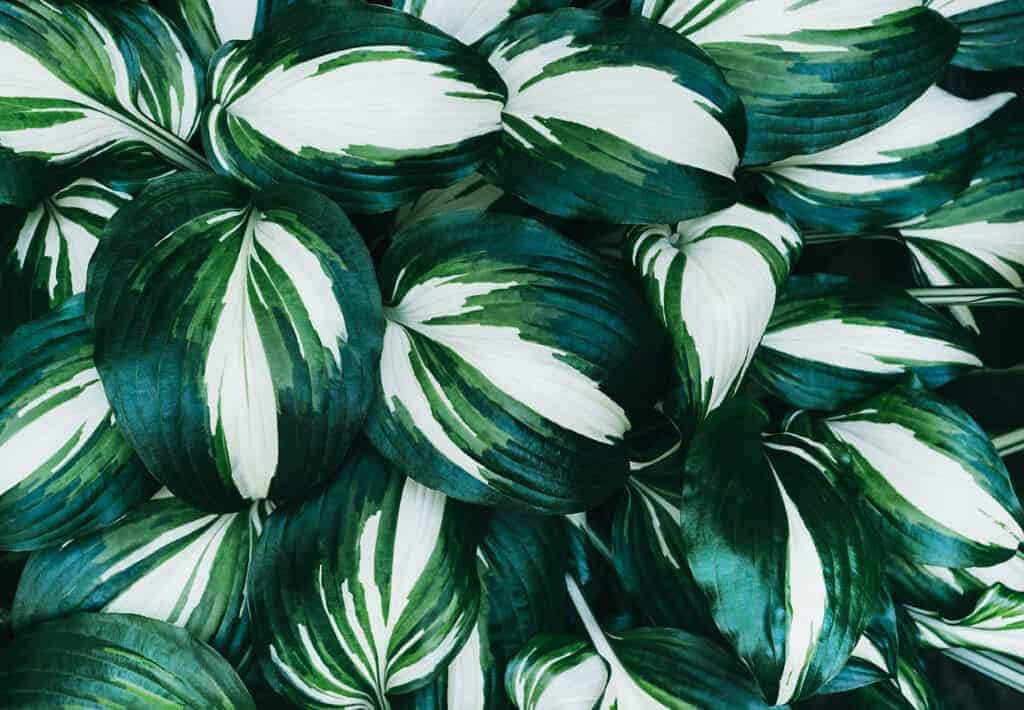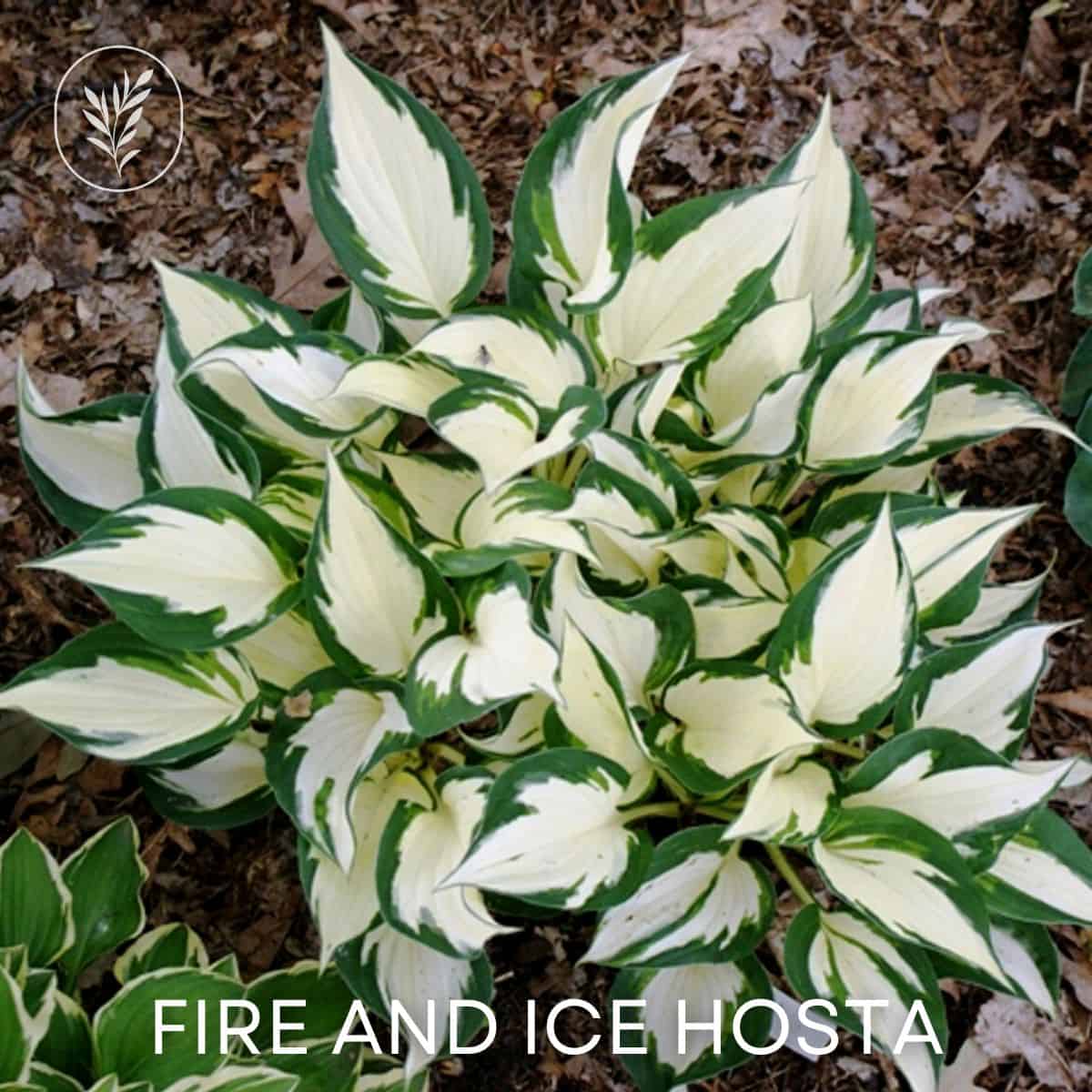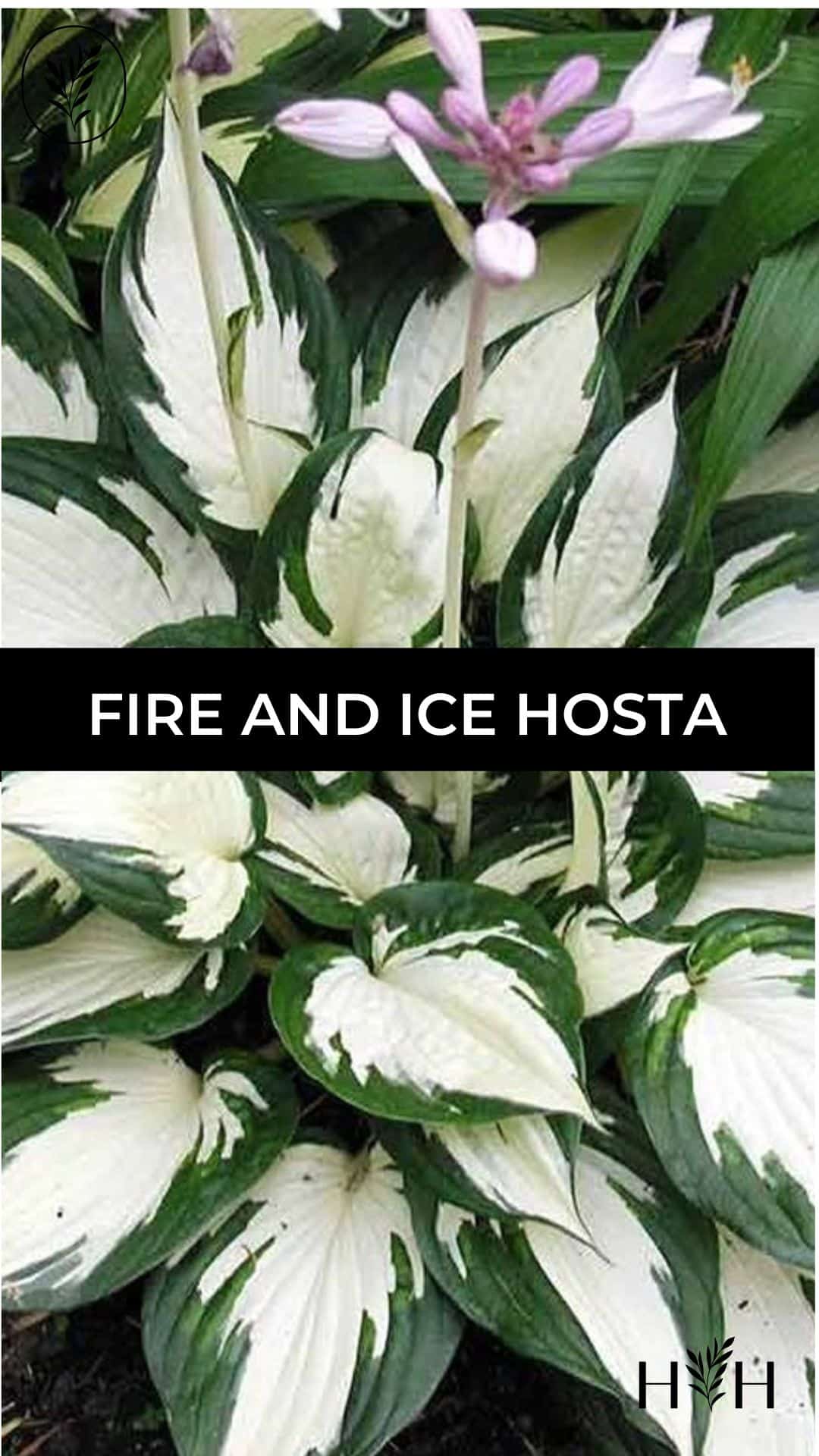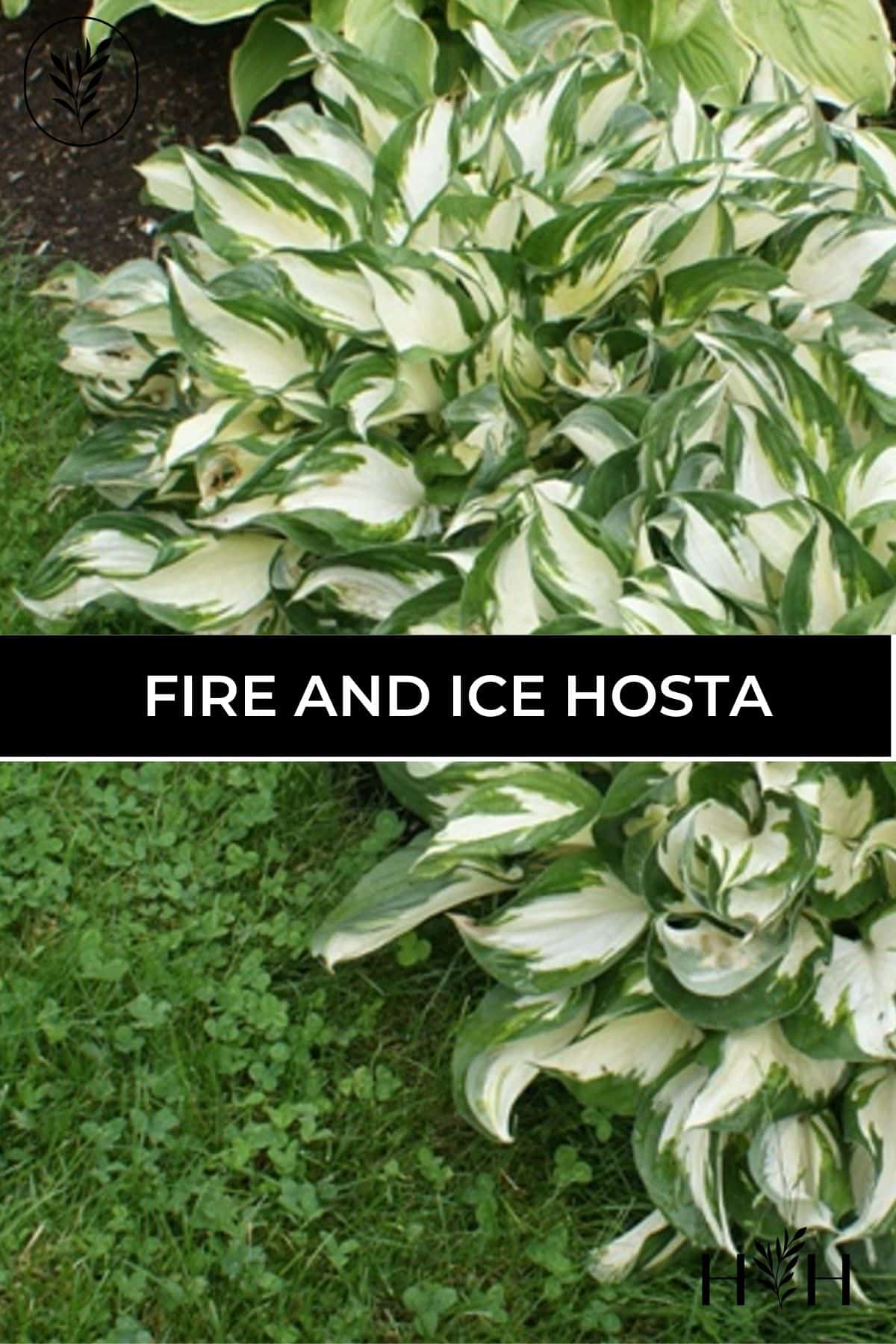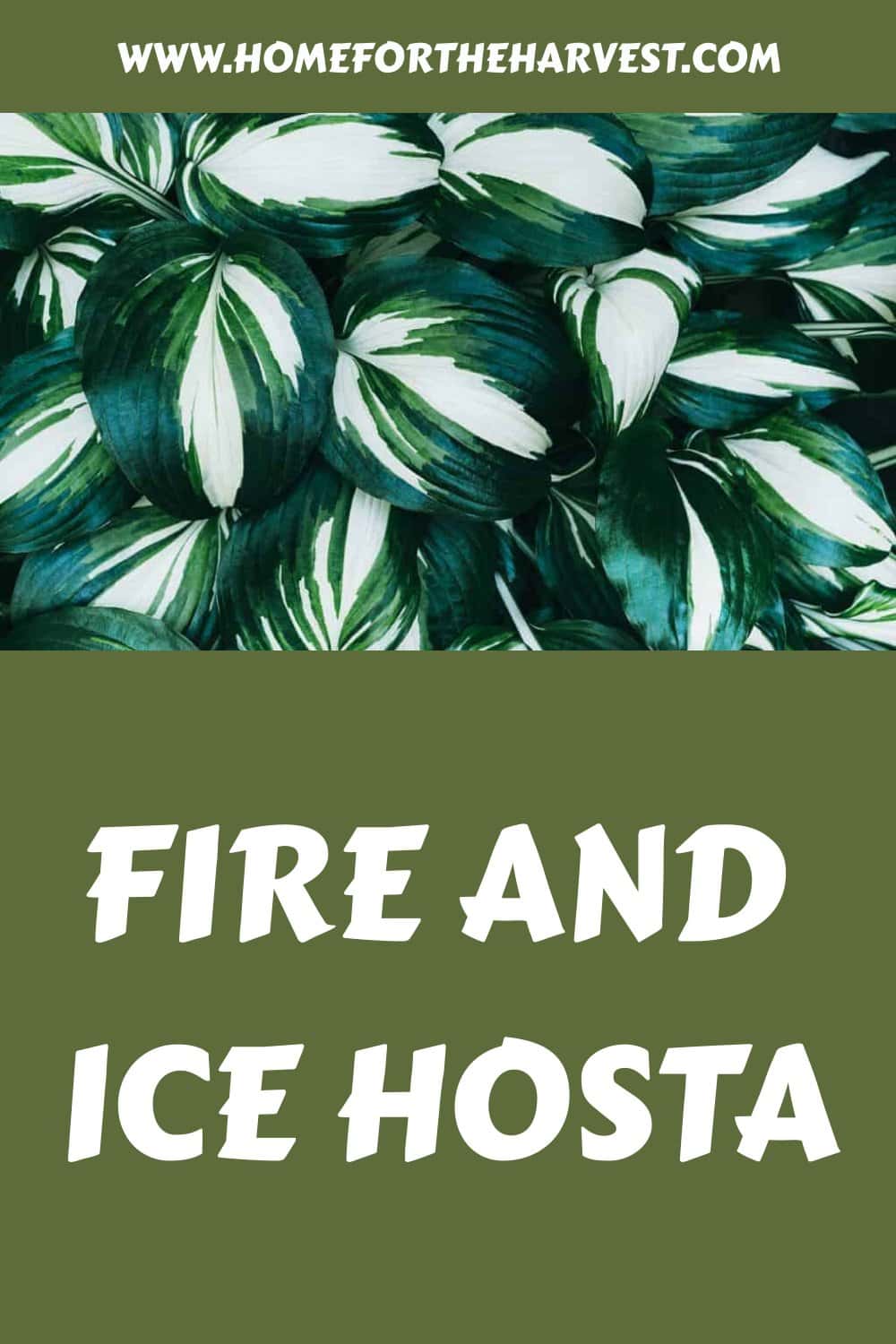The Fire and Ice hosta is a medium-sized hosta variety known for its highly contrasting variegated leaves and its tolerance to shade. The leaves of these ornamental perennial plants have white centers and dark green edges, creating a dramatic effect. Fire and Ice is a reverse-colored sport of the popular Patriot hosta.
Fire and Ice hosta basics
Fire and Ice hosta plants are best known for their stunning leaf patterns. Each leaf has a gorgeous pure white center surrounded by a deep rich green color. This high-contrast foliage makes ‘Fire and Ice’ a standout cultivar in the garden.
Fire and Ice hosta plants tend to form an upright mound about a foot wide and 8 inches tall. The pointed leaves are about 6 inches long and 4 inches wide in the middle. Leaf sizes vary depending on its general growing environment. Most commonly, hosta plants in the best conditions will have larger leaves than their neglected counterparts.
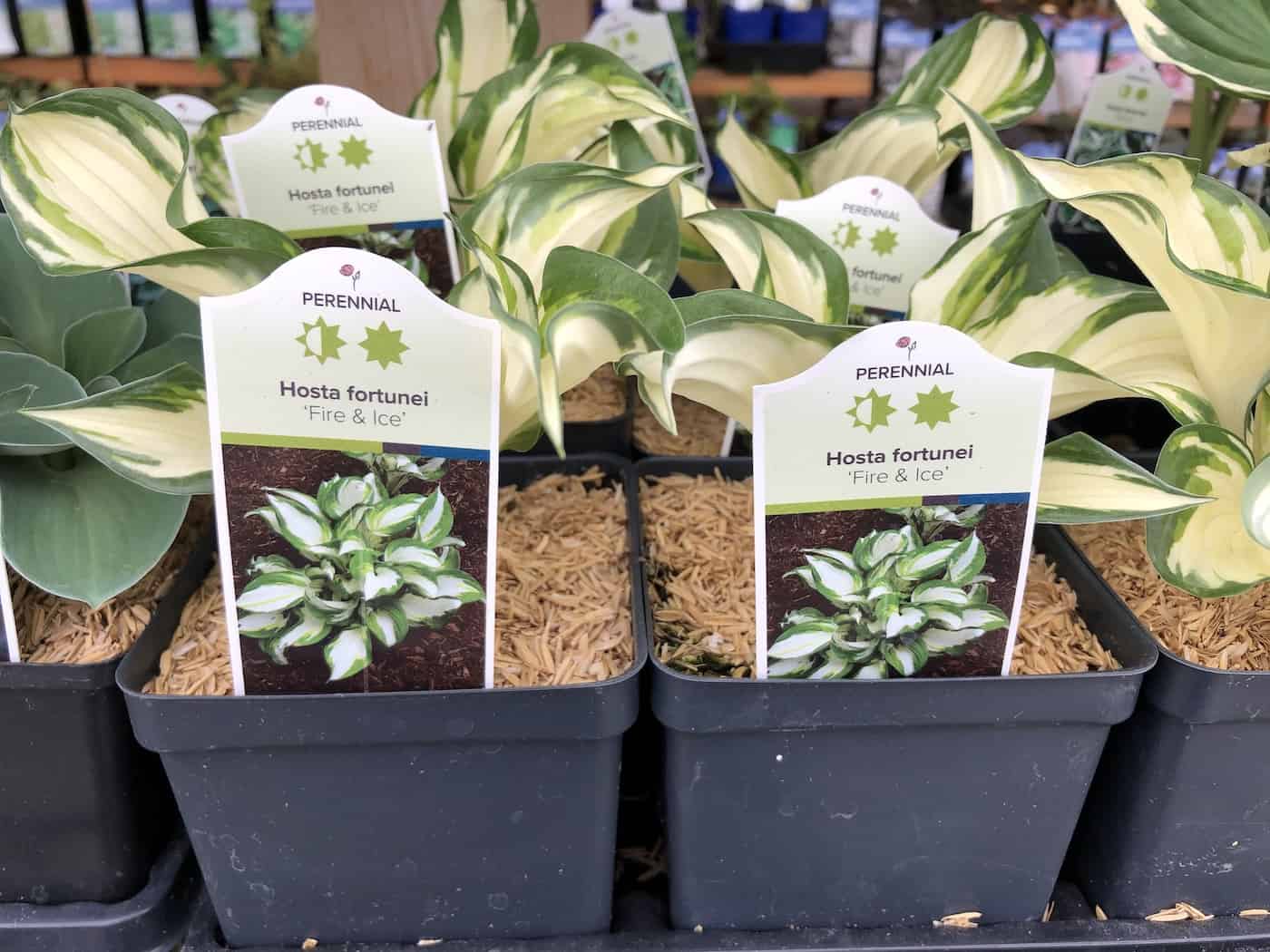
Fire and Ice was developed as a sport of the popular Patriot hosta. These plants both have a dramatic variegation pattern which draws the attention of the viewer. The patterning of Fire and Ice is inverse to the white-edged pattern of ‘Patriot.’
The Fire and Ice hosta is an American hybrid variety bred by Hans Hansen of Shady Oaks Nursery (Minnesota). The Fire and Ice hosta was introduced in 1999 as a reversed-color sport of the Patriot hosta and has since become one of the most popular hosta cultivars in North America.
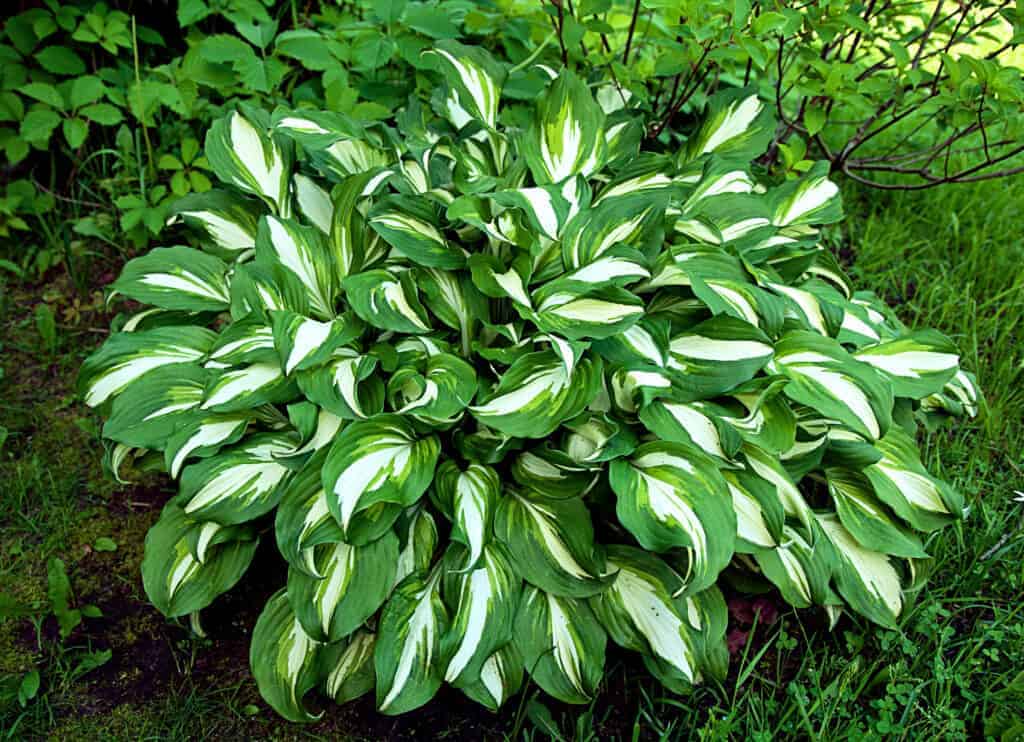
Planting Fire and Ice hosta
Hostas are most commonly planted in the spring. Fall planting is also popular. Summer planting is possible, but be sure to keep the plants very well watered during summer heat. Hostas are generally quite tough and can be planted any time of year provided the soil isn’t frozen.
The Fire and Ice Hosta grows most vigorously with a bit of direct sunlight in the morning. Like most hostas, the intense afternoon summer sun can easily damage this variety. Look for a planting location where indirect light is available to the foliage in the afternoon, and keep the plant shielded from harsh rays. A dappled shade is ideal.
Soil for hostas
Hostas grow best in nutrient-rich, slightly acidic fertile soil that is moist (not dry), but that drains excess water away easily. Typically, sandy loam soil enriched with organic compost is preferable. Hostas grow best in sheltered locations, where the large leaves are protected from harsh sunlight, strong winds, and potentially damaging precipitation like hail.
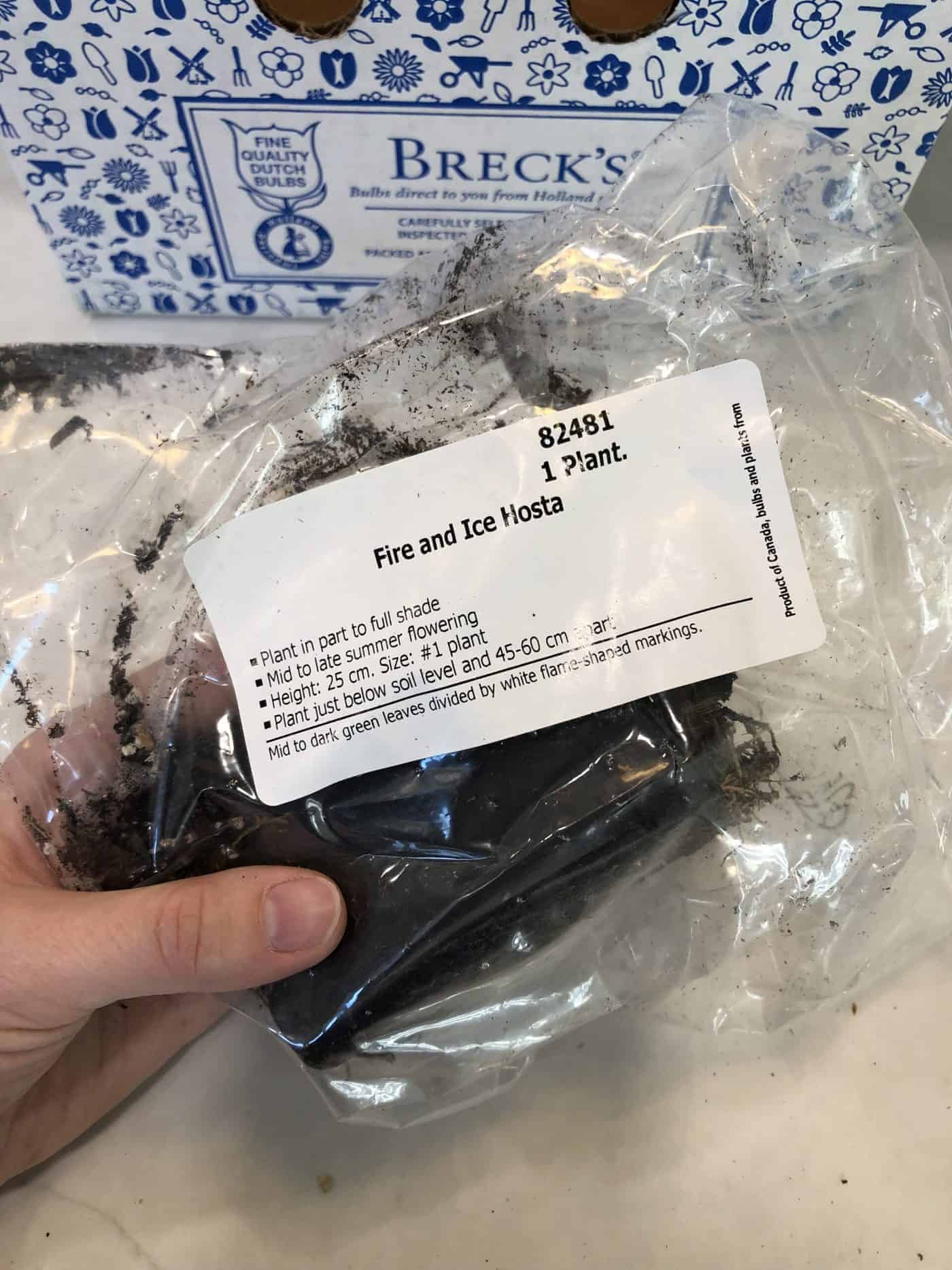
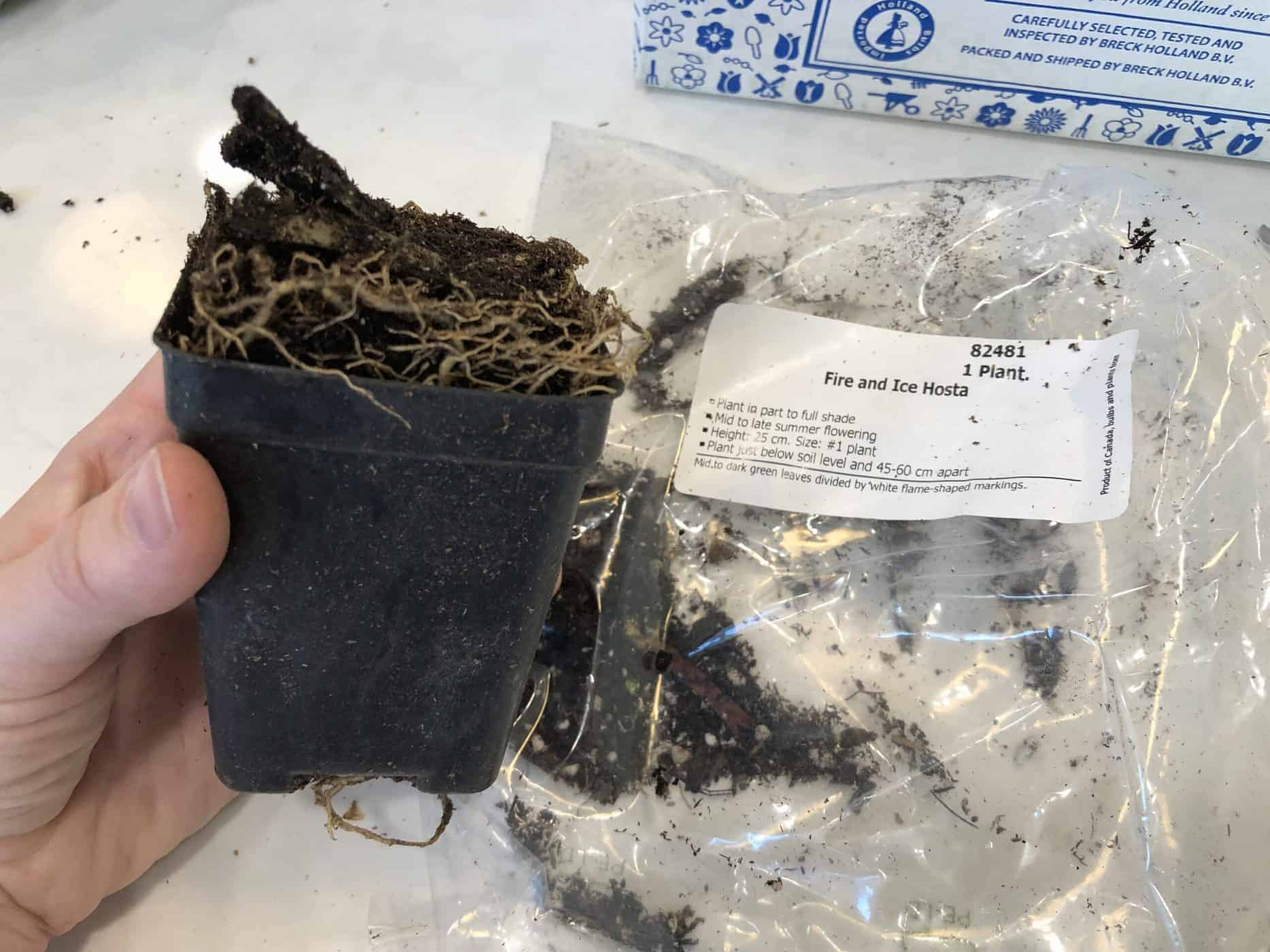
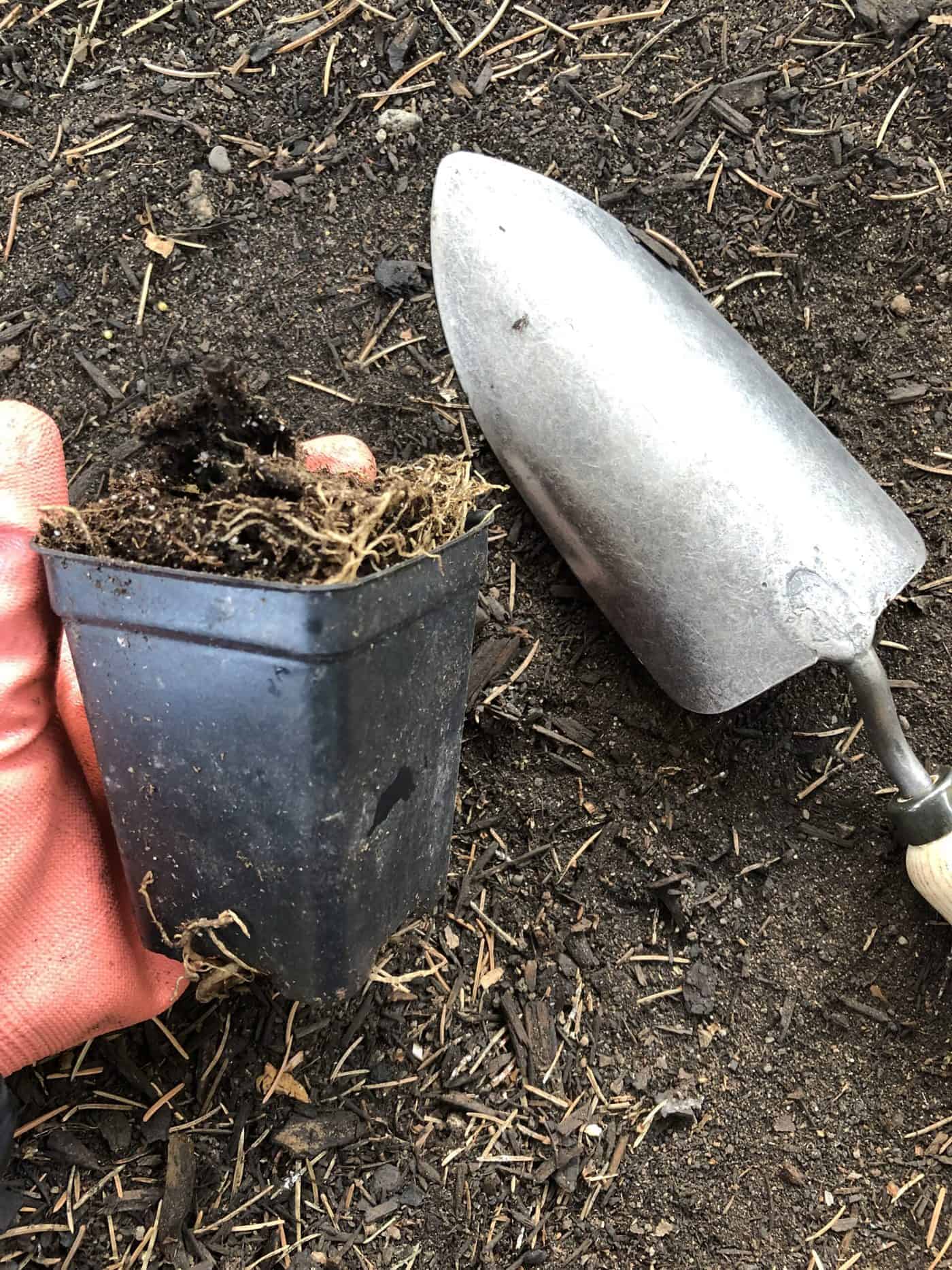
Planting locations for healthy hostas
When designing your garden or yard, you should have a general layout plan before you begin planting and growing new plants. If you are considering using Fire and Ice hosta plants as ground cover, you will need to make sure they are planted close enough that they will touch. Usually, this means planting 8-10 inches apart. This can create a beautiful effect with all of the gorgeous leaves next to one another.
If you are not planning on using the Fire and Ice hosta plants as ground cover, you will need to make sure they are planted further apart to give the plants visual separation. If hosta plants are planted too close together without the intention of having them be ground cover, they will look crowded and will need trimming and thinning.
Fire and ice hosta is also one of the best varieties to plant in a container. Here are some tips for growing hostas in pots.
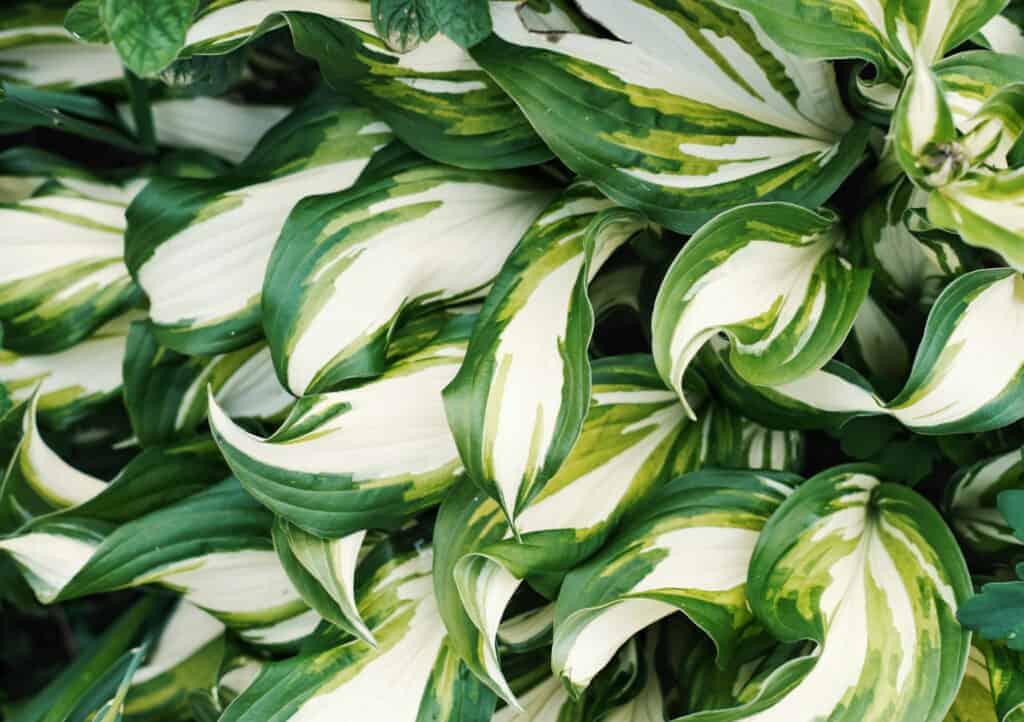
How to care for a Fire and Ice hosta plant
Another great benefit of Fire and Ice hosta plants is the extremely low maintenance that is required to care for them. It makes owning these plants very appealing because you will not have to spend your weekends working on them.
Feeding the plants
Hostas are most commonly fertilized in early spring. Feeding the plants is particularly important if their natural soil is poor and/or low in organic matter. You can use any sort of perennial plant food, evergreen fertilizer, or all-purpose mix.
Watering hostas
Hostas need to be watered frequently for the first year or two after planting. After this initial establishment period, they can be quite drought tolerant. Keep the soil moist for the first year or two, even if this means watering every few days in warmer weather. Try to water in the morning if possible, and avoid getting the foliage wet on a regular basis.
Similar hostas to Fire and Ice hosta
Here are some other varieties of hosta that are similar to the Fire and Ice:
- Loyalist hosta
- Patriot hosta
- Francee hosta
- Alternative hosta
- Abba Irresistible hosta
- Flash of Light hosta
- Paul Revere hosta


